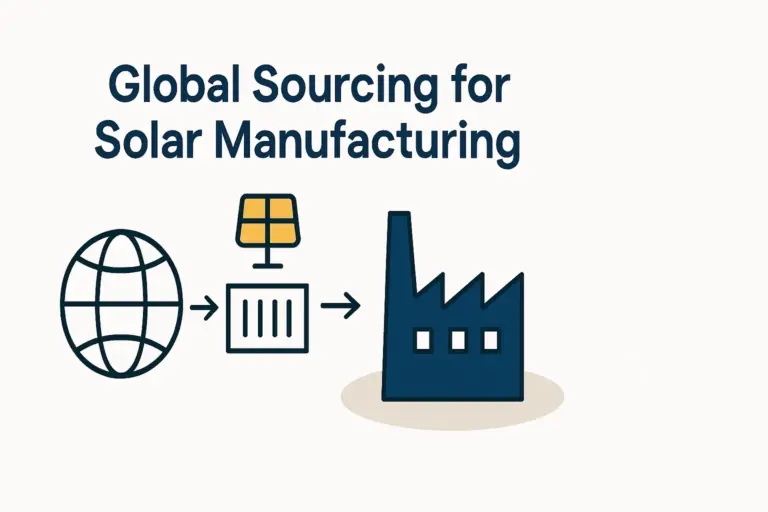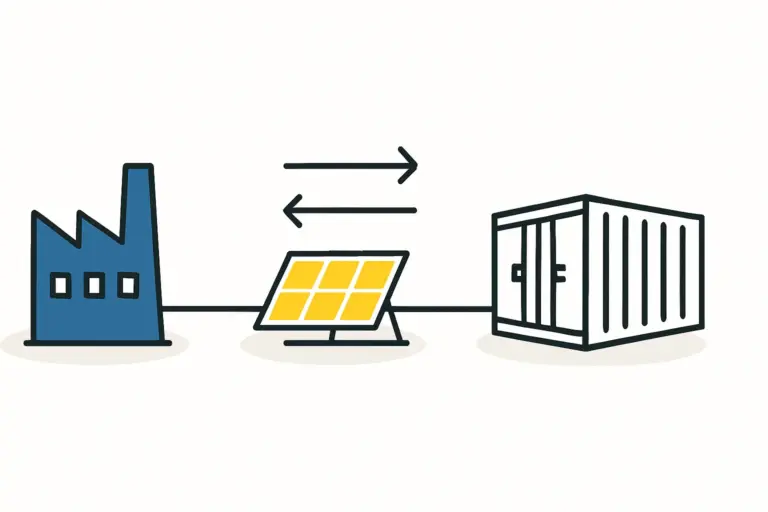Mauritania has set an ambitious national goal: to achieve universal access to electricity by 2030, with 50% of this energy coming from renewable sources. For international entrepreneurs, this policy creates a powerful tailwind.
When combined with the country’s exceptional average solar irradiation of 5.9 kWh/m²/day, the business case for local solar module manufacturing becomes compelling. This raises an immediate question: how to staff a specialized technical facility in a market where such industries are new?
A common concern for investors exploring new markets is the perceived lack of a skilled labor force. Yet, this challenge can be reframed as a significant strategic advantage. Mauritania’s high youth unemployment rate points to a large, untapped pool of motivated individuals.
The key lies not in finding existing experience, but in creating it from the ground up through a structured system. This article outlines a practical framework for recruiting, training, and developing a proficient local workforce for a solar module assembly line.
A well-trained local workforce is the backbone of any successful solar module assembly line.
The Strategic Advantage of Local Workforce Development
Relying on local talent is more than a logistical necessity; it is a cornerstone of a sustainable and profitable business model. A locally staffed operation enjoys greater community integration, long-term stability, and lower operational costs than one dependent on a large expatriate team.
By creating skilled employment, the enterprise becomes a valued part of the local economic fabric, fostering goodwill and a loyal, dedicated team. The objective is to transform raw potential into specific, high-value technical skills that will serve the facility for years to come.
A Phased Approach to Recruitment
In a nascent market for solar technology, traditional recruitment focused on prior experience is ineffective. The strategy must shift to identifying individuals with the right underlying aptitudes.
Phase 1: Identifying Core Aptitudes, Not Existing Skills
The ideal candidate for a solar assembly line does not necessarily need a background in electronics or manufacturing. Instead, the focus should be on identifying core competencies that predict success in a detail-oriented production environment.
These include:
- Attention to Detail: The ability to notice minor imperfections and consistently follow precise procedures.
- Manual Dexterity: Comfort and proficiency in handling delicate components like solar cells and connectors.
- Process Adherence: A disciplined mindset capable of executing repetitive tasks with high consistency.
- Problem-Solving Attitude: The capacity to identify an issue, stop the line, and ask for guidance rather than passing a defect forward.
Partnering with local vocational institutes and community leaders is an effective way to find candidates known for their diligence and reliability.
Phase 2: Structured Interviews and Practical Assessments
Formal interviews should be complemented with simple, hands-on assessments. A candidate might be asked to assemble a small, non-electrical mechanical puzzle or follow a diagram to connect a series of color-coded wires.
This practical test reveals far more about their aptitude than a conversation alone. It is also vital to adapt the process to local communication styles and cultural norms, ensuring the assessment environment is both fair and effective.
Building a Competent Workforce: The Three-Pillar Training Program
With the right individuals selected, a robust in-house training program becomes the next critical step. Experience from successful industrial projects in the region shows that a dedicated curriculum is the most reliable path to operational excellence. This program can be structured around three distinct pillars.
Pillar 1: Foundational Technical Knowledge
Before any employee steps onto the production floor, they must understand the ‘why’ behind their work. This classroom-based phase covers the fundamentals:
- Basic principles of photovoltaics: How a solar cell generates electricity.
- Workplace safety: Electrical safety, material handling, and emergency procedures.
- Introduction to the solar panel manufacturing process: An overview of each stage, from cell stringing to final testing, to give each worker context for their specific role.
This foundation ensures the entire team shares a common technical language and understands how individual contributions affect the final product’s quality and performance.
Pillar 2: Hands-On Machine Operation Training
With a theoretical understanding in place, training moves to the factory floor. Here, trainees learn the specific functions of the solar panel manufacturing equipment they will operate. Under close supervision, they practice core tasks in a controlled environment:
- Cell Stringing: Soldering solar cells into strings.
- Bussing and Lay-up: Assembling the strings and other materials (glass, EVA, backsheet).
- Lamination and Framing: Operating the laminator and framing machines.
A structured training program is essential for developing specialized skills from the ground up.

Pillar 3: Quality Control and Continuous Improvement
Quality cannot be relegated to a final inspection station. The most effective approach is to embed quality control into every step of the process. Each operator is trained to be the first line of defense for quality.
This pillar focuses on:
- Visual Inspection Criteria: Learning to identify common defects like microcracks, soldering flaws, or cell misalignment.
- Understanding Test Results: Basic interpretation of data from key quality checks like EL (Electroluminescence) testing.
- Process Discipline: Reinforcing the importance of not passing a known or suspected defect to the next station.
The Role of Expatriate Staff: Mentors, Not Just Managers
In the initial six to twelve months, a small team of experienced expatriate engineers or technicians is indispensable. Their primary role, however, should not be direct management but knowledge transfer. They are there to train local supervisors, establish standard operating procedures (SOPs), and troubleshoot advanced technical issues.
This ‘train the trainer’ model is a core component of a well-executed turnkey solar manufacturing line project. The ultimate goal is for the expatriate team to make themselves redundant by empowering a fully self-sufficient local management and technical team. For these experts, cultural sensitivity and an ability to mentor effectively are as crucial as their technical skills.
Mentorship and on-the-job training bridge the gap between theory and practical application.

A Practical Example: J.v.G. Technology’s Approach in New Markets
Based on J.v.G.’s experience with turnkey projects in similar emerging markets, a six- to eight-week intensive training program has proven highly effective. A typical schedule involves two weeks of classroom theory followed by four to six weeks of supervised, on-the-job practice.
During this period, individuals with leadership potential are identified and receive additional training to become future team leads. The primary objective is to develop a capable local supervisory layer within the first year, ensuring the facility’s long-term autonomy and success.
Frequently Asked Questions (FAQ)
What is the ideal educational background for entry-level assembly staff?
A formal degree is not necessary. A background from a vocational or technical school is beneficial, but the primary focus should be on aptitude, a willingness to learn, and attention to detail.
How many employees are needed for a small-scale assembly line?
A typical 20–50 MW semi-automated line operates efficiently with a team of 25 to 35 employees, covering production operators, quality control personnel, maintenance, and logistics.
How long does it take for a new team to become fully proficient?
With a structured training program, a new team can achieve baseline productivity within two to three months. Full proficiency, where operators meet and exceed target outputs with minimal defects, is typically reached within six to nine months.
Is it necessary for all staff to speak English?
No. While key managers and lead engineers should have a working knowledge of English to interpret equipment manuals and communicate with international partners, operator-level training can be delivered effectively using translators, visual aids, and hands-on demonstrations. Hiring a bilingual local supervisor is a highly effective strategy.
Conclusion and Next Steps for Exploration
The absence of a pre-existing skilled labor pool in a market like Mauritania is not a barrier but an opportunity. It is a chance to build a loyal, dedicated, and highly capable workforce from scratch, precisely tailored to the needs of the operation.
A strategic framework focused on identifying aptitude, implementing a rigorous training program, and fostering local leadership is the key to unlocking this potential. For those considering such an investment, the logical next step is to explore how to start a solar panel manufacturing business to get the comprehensive framework needed to move from concept to a successful operational reality.







